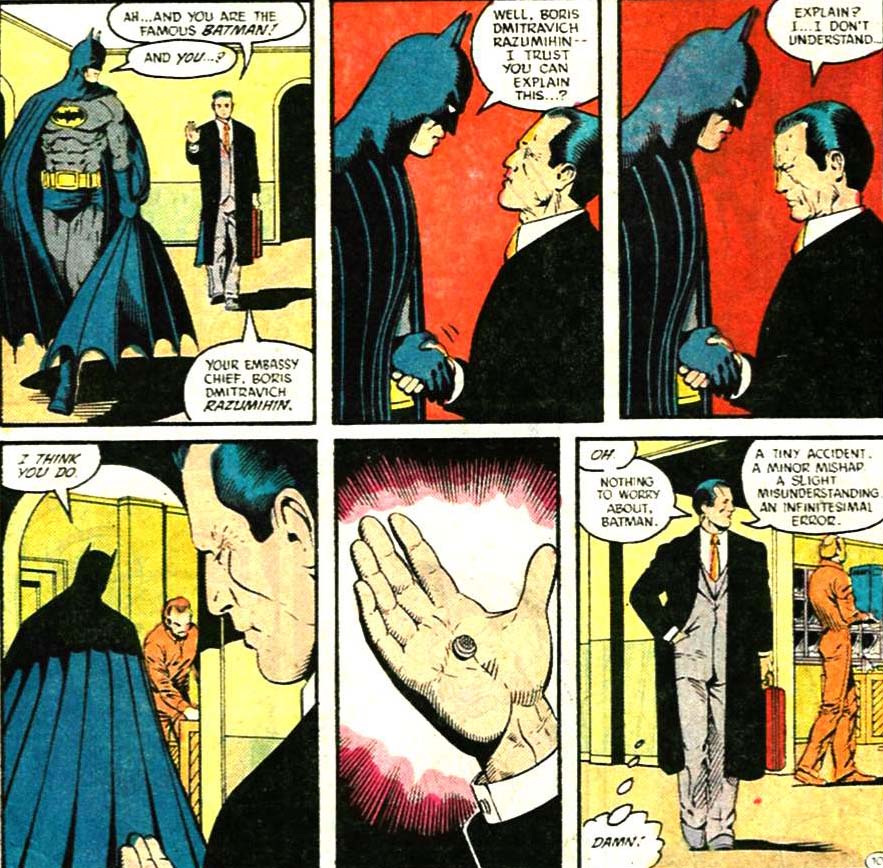1980s’ sci-fi thrillers gave us some of the bleakest visions of the future. They dealt with either impending conflict between the US and the USSR – Escape from New York, The Day After, Red Dawn – or its post-apocalyptic outcome – the Mad Max sequels, The Terminator, Akira – painting dark, gritty, and hyper-violent dystopias. This sense of dread is quite understandable, given the escalation of international tension early in the decade, what with the Soviet war in Afghanistan, Ronald Reagan’s aggressive posture towards the Evil Empire (including the threat of lodging nuclear weapons in space), NATO’s war games near the Iron Curtain, etc… Batman comics, which had been engaging with the Cold War for a while, also addressed these concerns, yet for the most part they did it through much more colorful, and decidedly weirder, imagery (yes, weirder than Tina Turner in Mad Max beyond Thunderdome).
Granted, one major exception to this rule happens to be the most popular Batman book of the decade:
 In The Dark Knight Returns, writer-artist Frank Miller fully embraces the nightmarish pessimism and cyberpunk attitude of the abovementioned movies. If anything, he manages amp them up:
In The Dark Knight Returns, writer-artist Frank Miller fully embraces the nightmarish pessimism and cyberpunk attitude of the abovementioned movies. If anything, he manages amp them up:
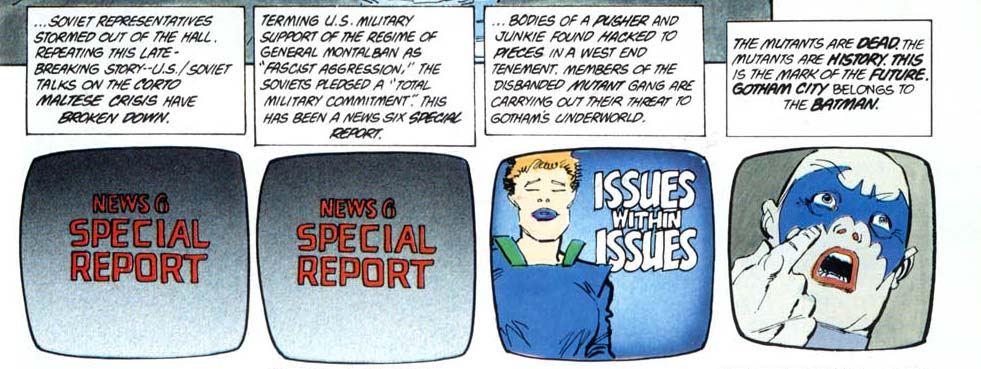 The Dark Knight Returns #3
The Dark Knight Returns #3
A subplot revolves around the breakdown of relations between Washington and Moscow over the Central American island of Corto Maltese. At first, this seems to be just one more of the book’s satirical touches, like Reagan’s folksy speeches or the tongue-in-cheek newscasts (which include, for example, the report that the American Hostages Guild has declared a general strike in response to ill-treatment of their members in Libya). However, the dispute over Corto Maltese soon comes to the forefront, as even poor Superman gets involved:
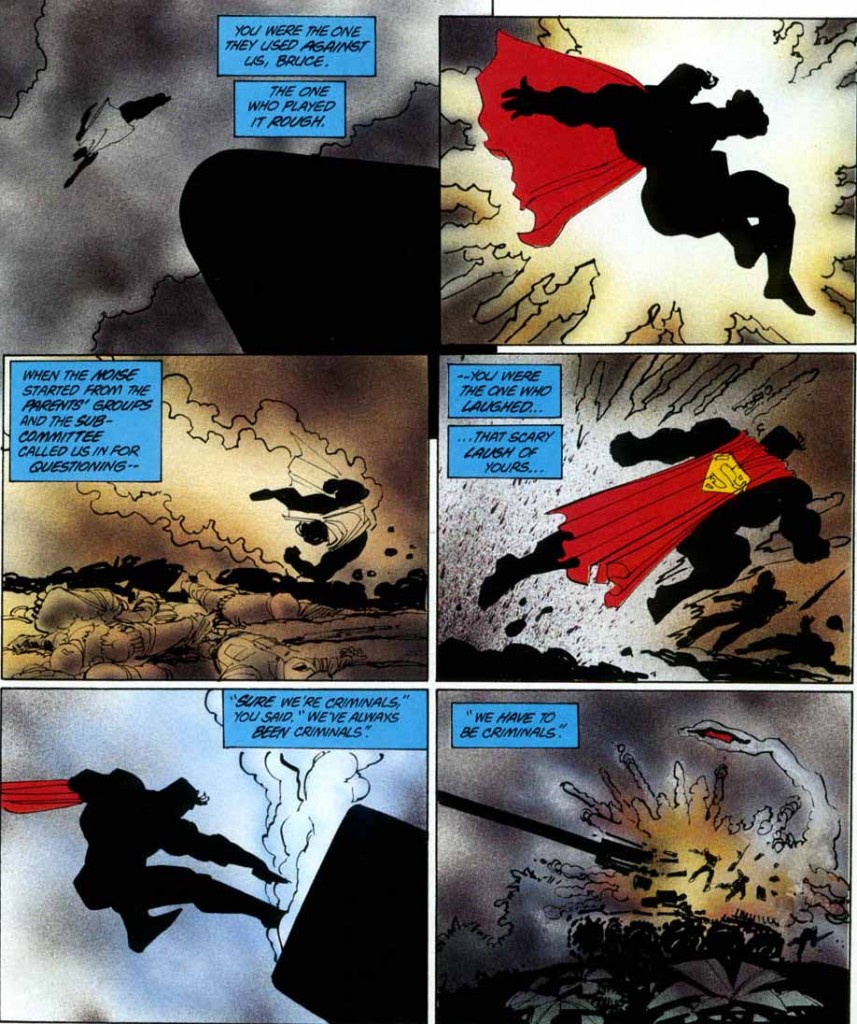 The Dark Knight Returns #3
The Dark Knight Returns #3
Frank Miller takes full advantage of the fact that he can take the story wherever he wants. After all, Dark Knight is not set in the same version of the DC Universe as other comics being published at the time – it is what is typically called an ‘imaginary story’ (although, like Alan Moore put it, in the end, aren’t they all?). So a Soviet missile reaches American soil, there is social chaos, martial law, environmental doom…
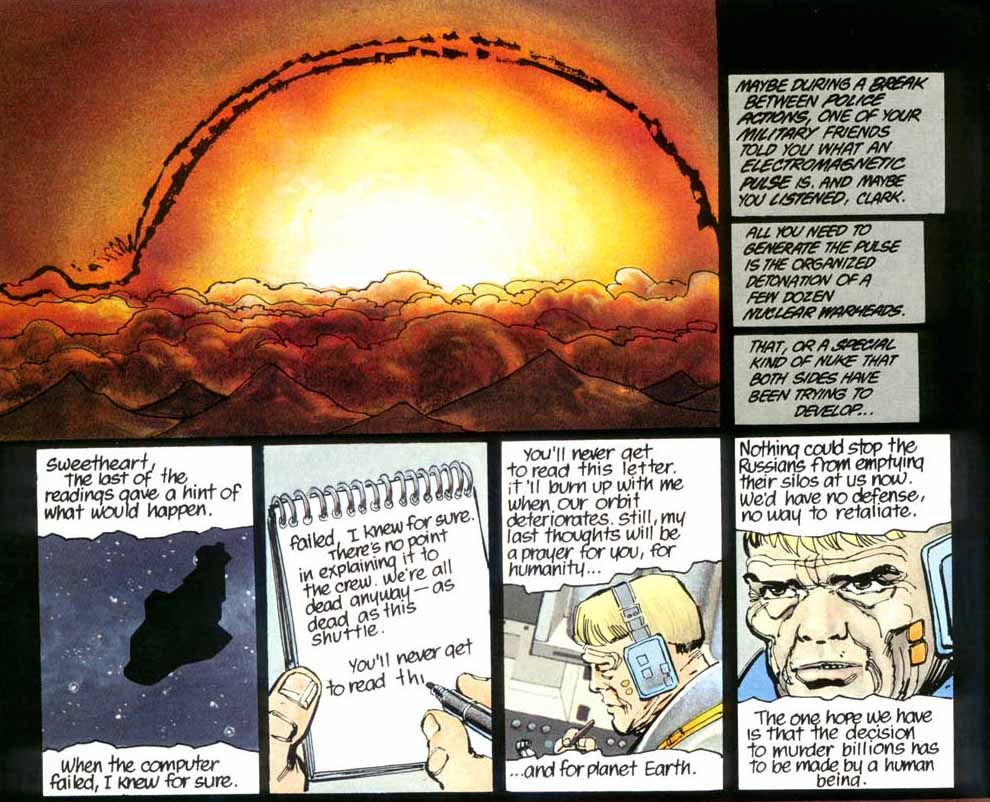 The Dark Knight Returns #4
The Dark Knight Returns #4
Indeed, we have Miller and his collaborators to thank for one of comics’ most powerful, unforgettable images of nuclear destruction:
 The Dark Knight Returns #4
The Dark Knight Returns #4
In official continuity, the Cold War tends to take kookier forms. Batman staves off an alien invasion in Cuba. Bruce Wayne gets charged with treason as he is accused of funding mind-controlled espionage. His ex-girlfriend Vicki Vale investigates Russian weapons being smuggled to rebels in Guatemala, only to discover that the Joker is trying to take over that country and turn it into a giant amusement park.
The most political threats are usually fought in the Caped Crusader’s team projects. Notably, the Cold War is all over Batman and the Outsiders and its spinoffs:
Written by the eccentric Mike W. Barr, these comics tell the adventures of a group of misfit heroes founded by Batman, who go up against madcap versions of whatever Barr had just heard about on the news. Many stories revolve around the Eastern European country of Markovia, which at one point gets invaded by Soviet troops, but only because they are tricked by a local Nazi (who literally resuscitates the corpse of Adolf Hitler).
Barr also addresses the internal threat to freedom posed by Cold War logic. In ‘…land where our fathers died…!,’ published in 1984, Batman and the Outsiders destroy Project Orwell, a right-winger’s scheme to intercept personal computers and reverse television signals in order to spy on American homes and identify individuals with ‘subversive tendencies.’ This story marks the first of many confrontations between the Outsiders and the Force of July (get it?), an ultranationalist team of American superheroes with the evocative names of Major Victory, Lady Liberty, Mayflower, Sparkler, and Silent Majority:
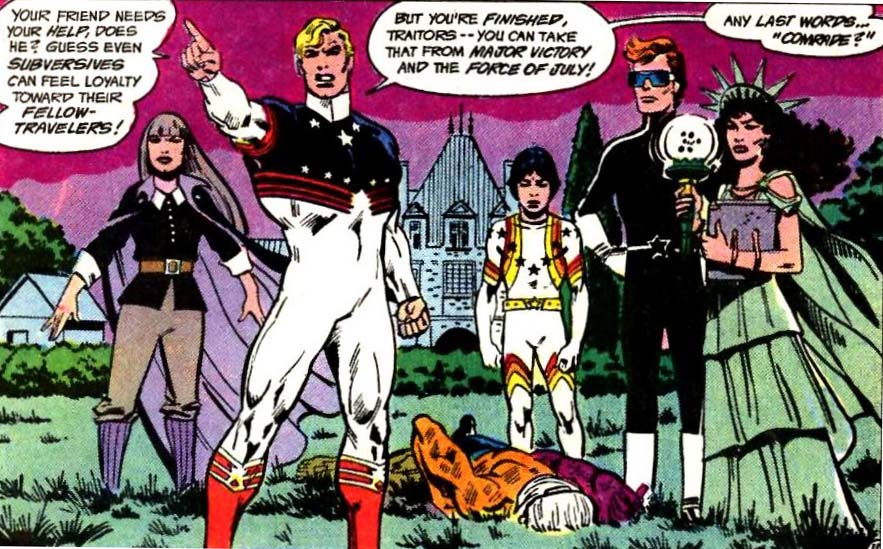 Batman and the Outsiders Annual #1
Batman and the Outsiders Annual #1
Other Cold War-themed teams to cross paths with the Outsiders include a family of radioactive automatons programmed to blow up Los Angeles in order to teach the world the horror of nuclear devastation…
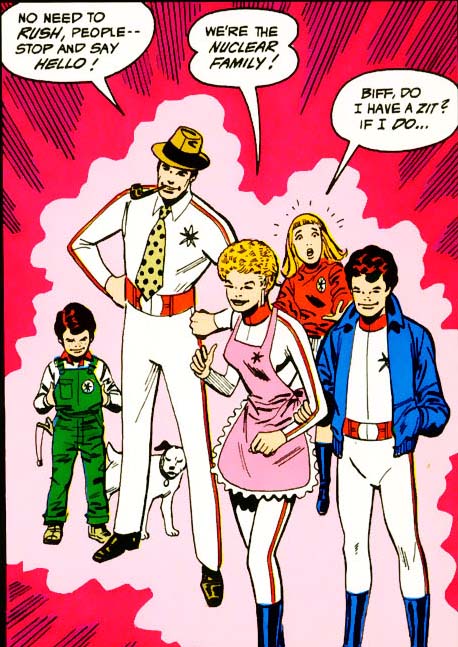 The Outsiders #1
The Outsiders #1
…a Russian supergroup made up of Hammer, Sickle, Bolshoi, Molotov, and Pravda…
 The Outsiders #10
The Outsiders #10
…a battalion of post-nuclear war knights, riding mutant dogs….
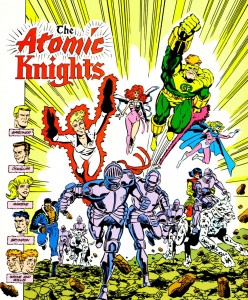 The Outsiders #27
The Outsiders #27
…and Fusion, the next generation in Soviet meta-human warfare:
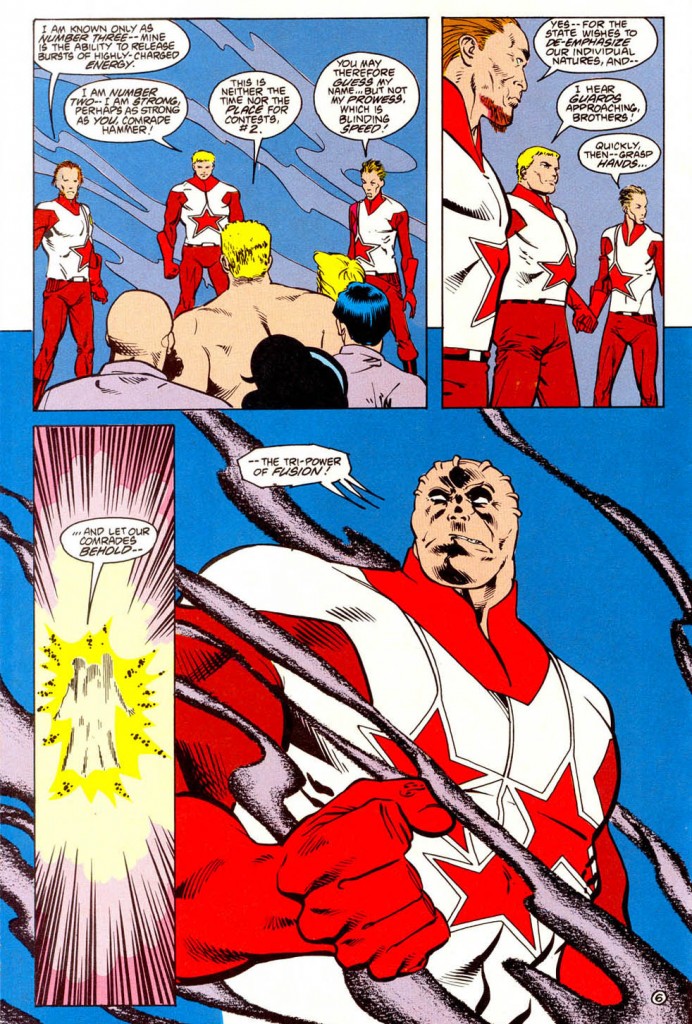 The Outsiders #23
The Outsiders #23
This last one actually tries to assassinate President Reagan at Camp David, but as usual Batman is on top of things:
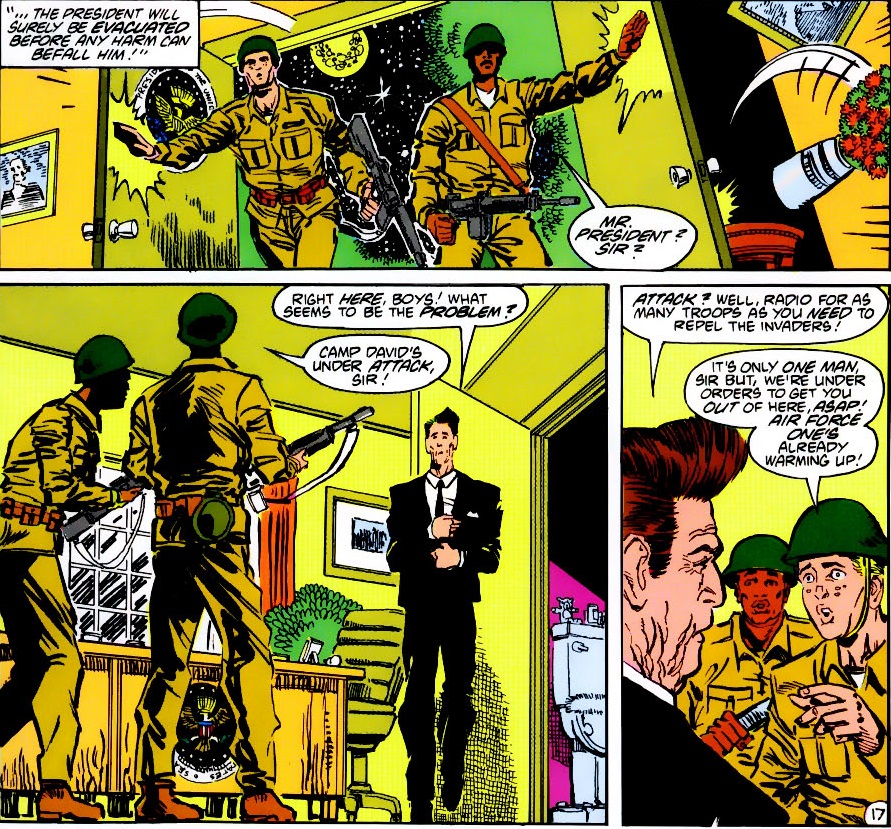
 The Outsiders #24
The Outsiders #24
The Caped Crusader and the Outsiders also spring into action when the super-terrorist Lord Kobra takes over Reagan’s proposed SDI defense system – commonly known as ‘Star Wars’ – and demands Washington turn over the entire contents of Fort Knox… or he will sell the ‘Star Wars’ system to Soviet Russia! Not only does this make for an exciting cliff-hanger, it also gives us a cute ‘Next Issue’ blurb:
 Batman and the Outsiders #26
Batman and the Outsiders #26
To his credit, Mike Barr doesn’t sell Gorbachev short:
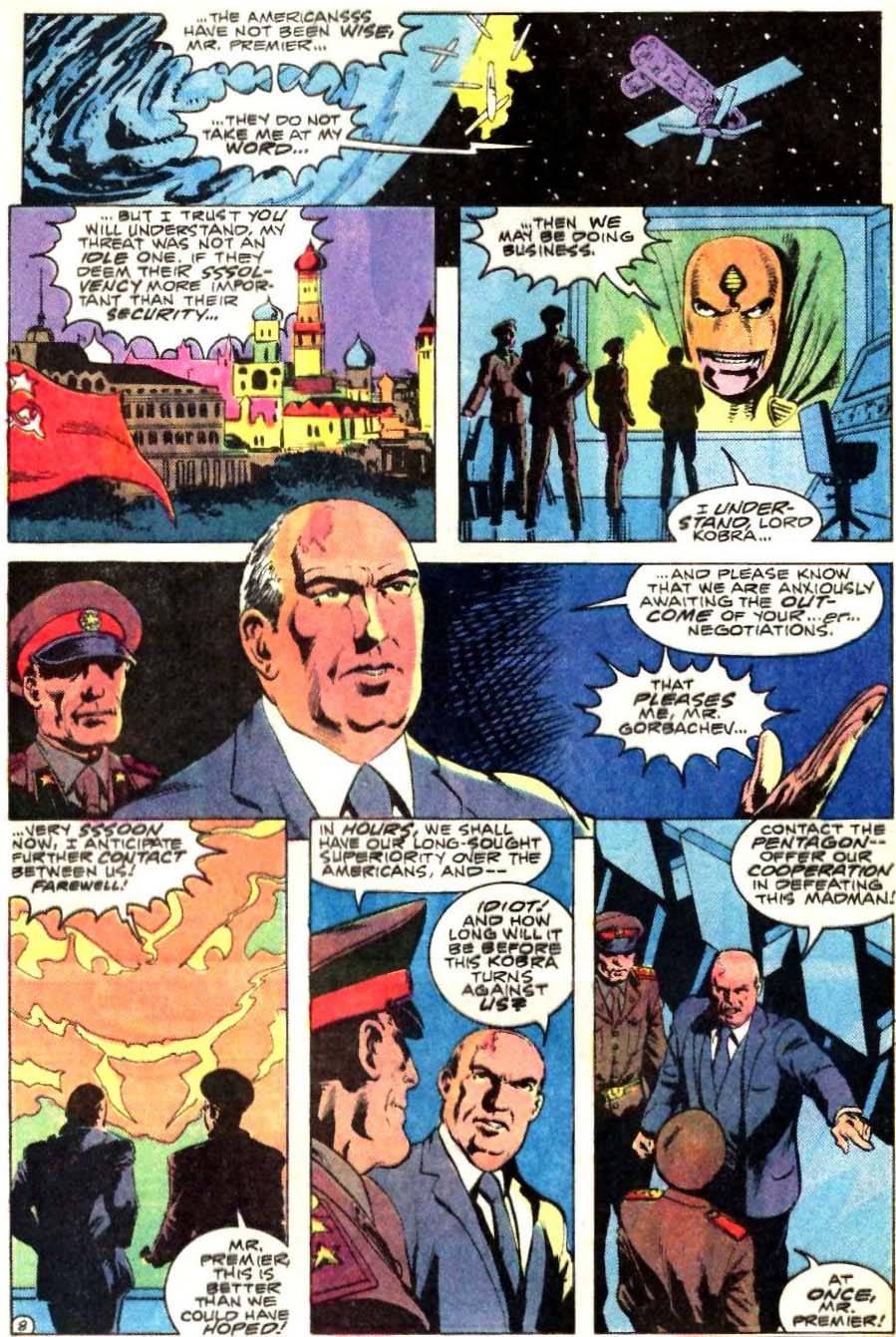 Batman and the Outsiders #27
Batman and the Outsiders #27
Mikhail Gorbachev shows up again in ‘Breaking the Bank!’ Worried about the USSR’s runaway inflation and growing feelings of discontent, the Soviet leader authorizes a plan to steal dollar printing plates from the US reserve. The Outsiders and Force of July chase the plates all the way to Leningrad, culminating in another pragmatic Gorbi moment:
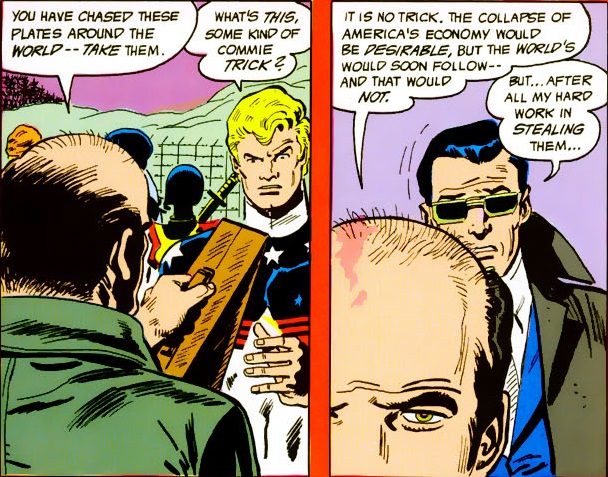 The Outsiders #4
The Outsiders #4
Pragmatic, but devious. A few issues later, Gorbachev comes up with another plan to solve his country’s economic troubles. This time he gets the president of the pro-Soviet African state of Mozambia (what you get when you cross Mozambique and Zambia, down to the flag colors) to divert the profits from a huge Live Aid-like concert to combat hunger, titled Fund American Money Into Needy Eurafrica (F.A.M.I.N.E.).
Barr had so much fun writing the Soviet leader that Gorbachev also shows up in the pages of Batman’s classic tale Son of the Demon, where a psychopathic terrorist obsessed with death and destruction uses an American weather-controlling satellite to provoke the USSR. Given the circumstances, Gorbi’s reaction doesn’t seem all that unreasonable:
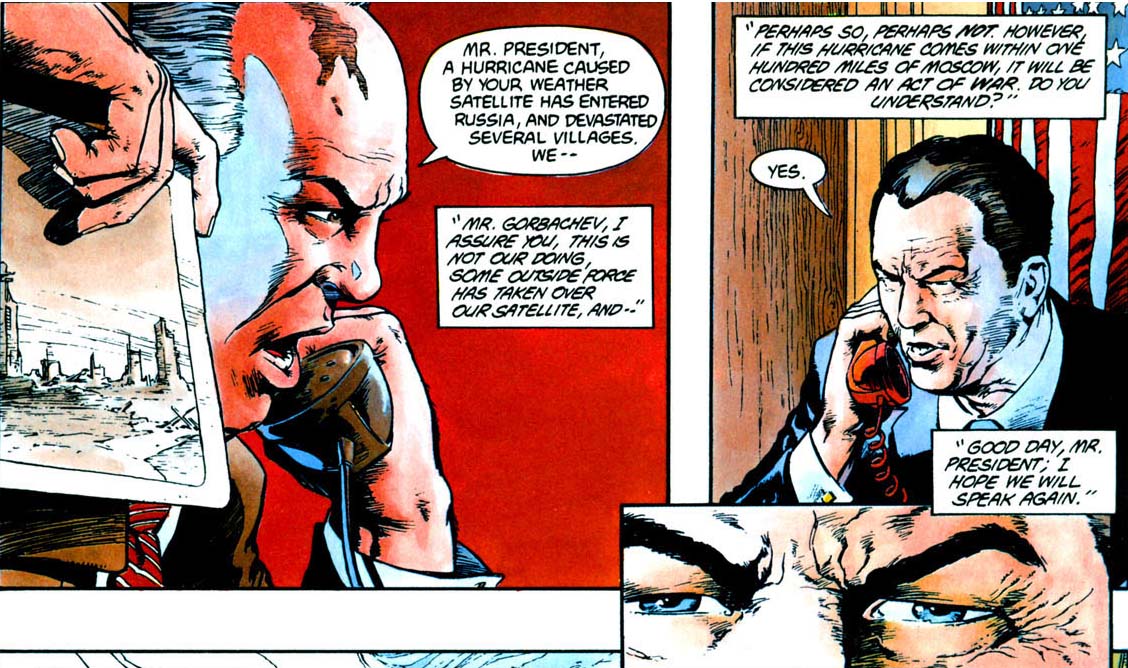 Son of the Demon
Son of the Demon
The other super-team Batman belongs to who is often entangled in international politics is the UN-affiliated Justice League. The League is called to intervene, for example, against a trio of super powered idealists from an alternative Earth (devastated by nuclear holocaust) who try to destroy this Earth’s stockpile of nuclear weapons. When the trio attacks a Russian missile base though, they have to face not only the League, but yet another group of Soviet superheroes:
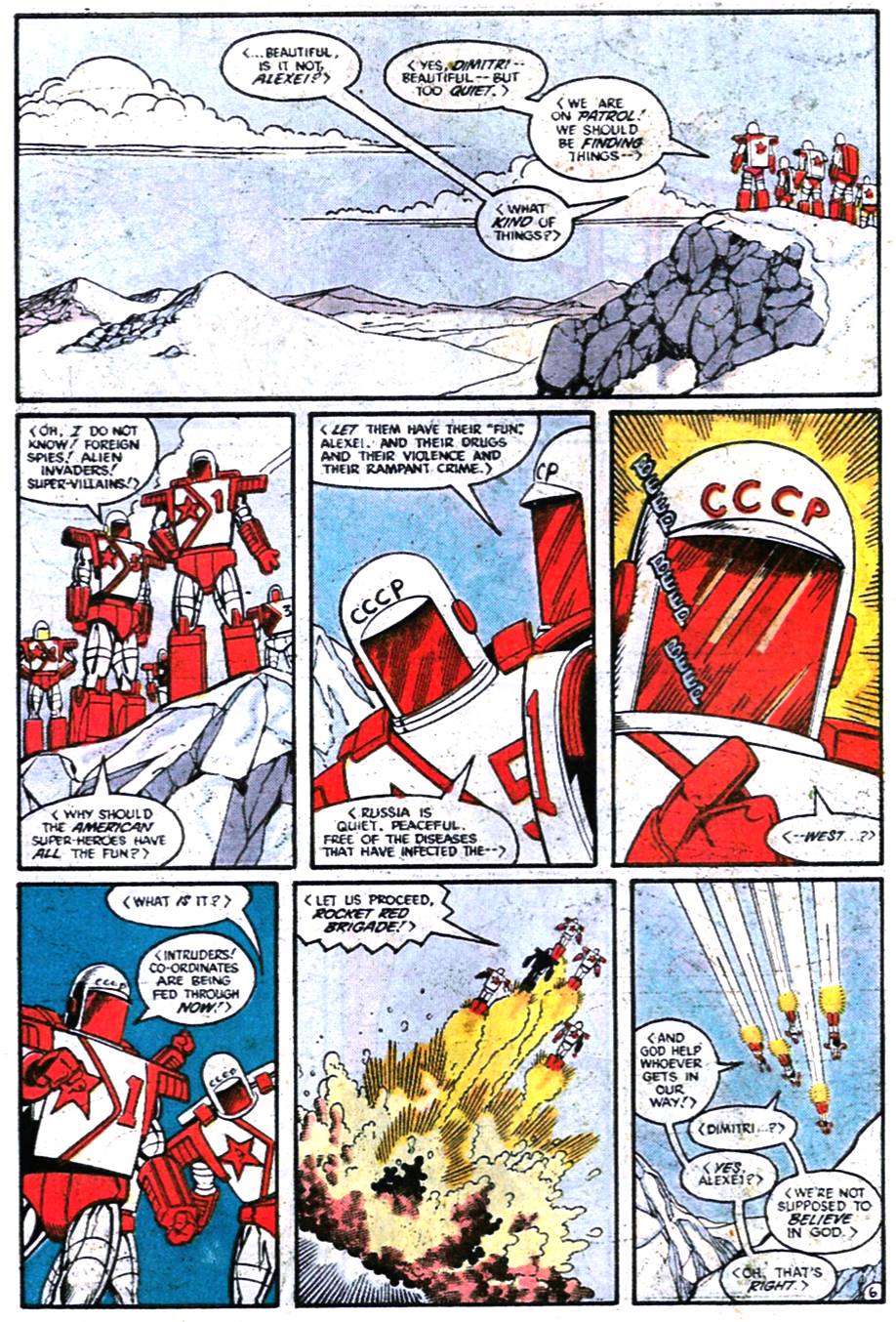 Justice League #3
Justice League #3
One of these Red Rockets and the American patriot Captain Atom join the League as a concession to Moscow and Washington when the team is upgraded to Justice League International (JLI). As part of the upgrade, the JLI also establishes embassies all over the world, leading to this great exchange that proves that even the KGB knows how cool Batman is:
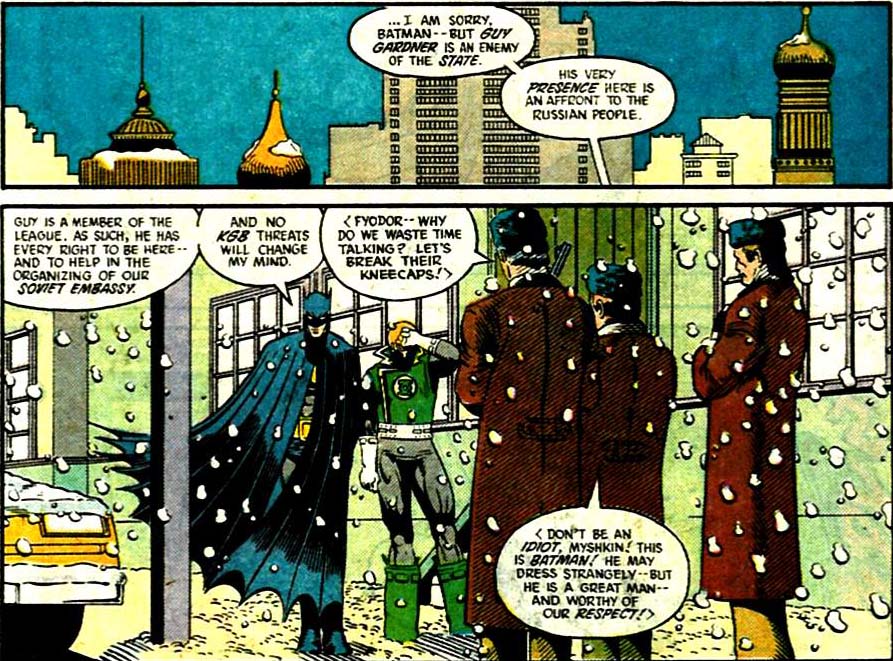 Justice League International #8
Justice League International #8
The Dark Knight, on the other hand, is no more willing to take shit from the reds than he is from anyone else:




